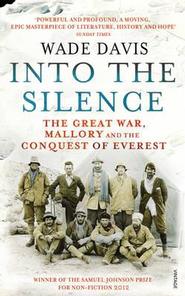
As final exams approach, many Hamilton students are facing one last mountain of work before they can head home for the holidays. Perhaps appropriate for this season and providing a welcome break from all the studying, Hamilton welcomed prize-winning author Wade Davis on Dec. 12 to discuss his award-winning work, Into the Silence: The Great War, Mallory, and the Conquest of Everest.
Into the Silence is a piece of historical writing that primarily focuses on famed British explorer George Mallory’s 1924 attempt to summit Mt. Everest and examines this topic through a nuanced lens. After Mallory and his climbing companion Sandy Irvine were lost in the clouds near the top of Mt. Everest and never heard from again, many were fascinated with the question of whether the duo ever made it to the summit.
However, for Davis, the answer doesn’t matter much. Instead, what was a much more intriguing question for this project was how the men were willing to embark on such a perilous quest in the first place, accepting such high risk to their own lives in pursuit of such a lofty goal. For this answer, Davis pointed to the First World War as a transformative experience that touched the lives of the entire Mallory expedition and brought about a generational mentality that death was less important than how life was lived. For Davis, this conclusion gives explanation for why Mallory kept pushing for the summit, even unto his own end.
In order to support this narrative, the largest task for Davis’ work was to assemble the stories of the 26 men on the expedition and their activities during the First World War. This task seemed daunting but fortunately, individual tales from the war proved to be documented extensively.
Over a 12-year period, Davis was able to gather the pieces he needed. In the end, he drew direct connections for 22 of the 26 men to the sacrifice and loss of life in war with a range of experiences that included mass causalities, poisonous gas, family members killed and the full range of terrible smells and noises we often forget about in our collective memory of the war. Davis stressed to the audience the sheer scale of the war and what it must have been like to see entire regiments wiped out in minutes in the chaos and unprecedented horror that was trench warfare. The idea that anyone could have gone through these types of experiences unchanged is unimaginable.
From here, we find the Mallory expedition, touched by war, attempting to be the first to make it to the rooftop of the world. Again, Davis engaged in extensive research, travelling to the base of Everest, tracking down surviving sources, and even unearthing new historical documents that provided new information about the men who accompanied Mallory on his final journey.
The picture Davis is able to assemble with all this information brings his work full circle to provide new significance for the attempts to conquer Everest.
Not just a mountain, Everest was a “backdrop for modernity” and a world changed by The Great War. Mallory’s expedition represented much more than just an attempt at a historic first summit, it was also symbolic in a generational context and thanks to Davis’ skill in research and writing, this side of the story can finally be told.
Posted December 13, 2012
